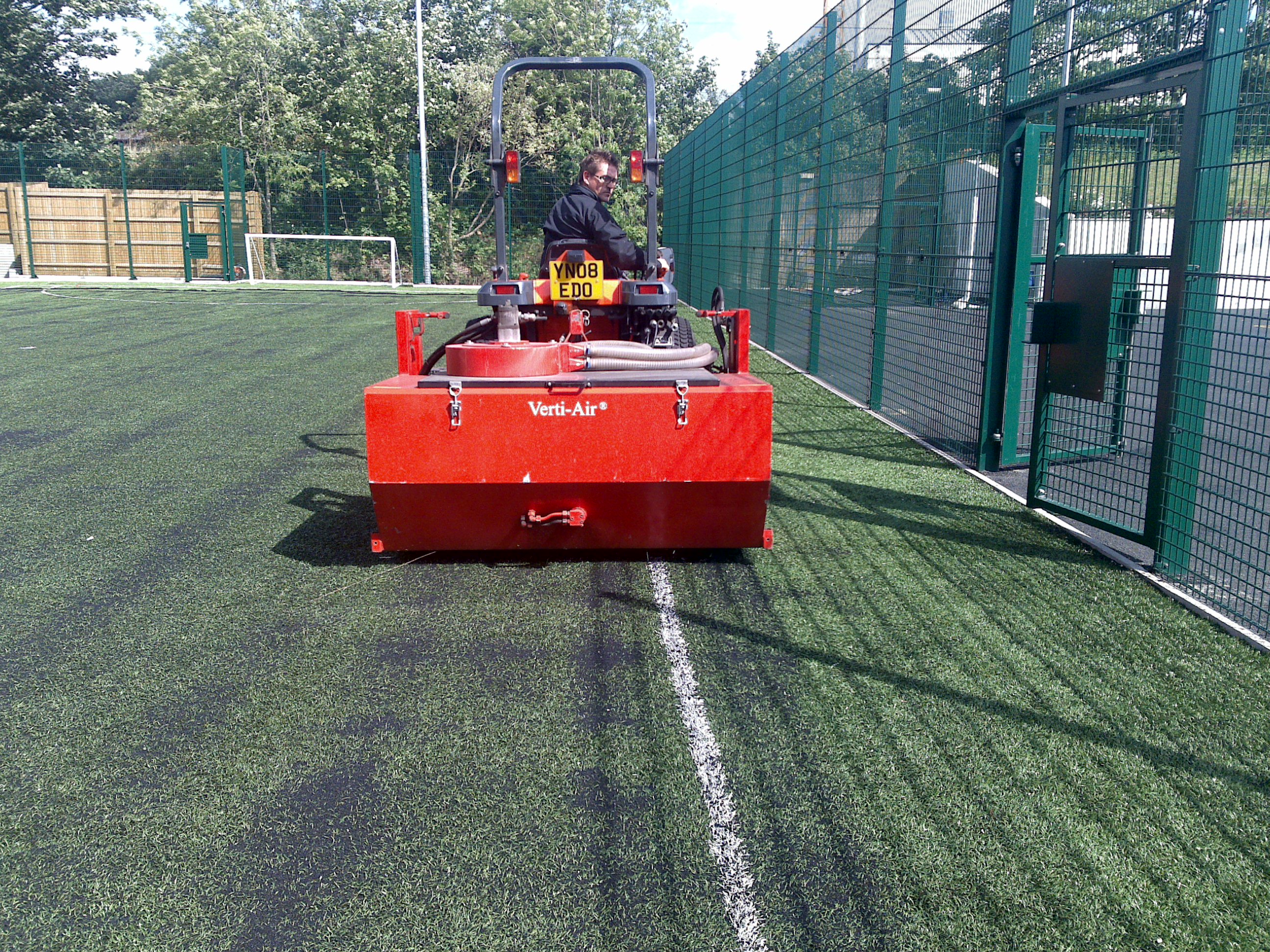Maintaining Synthetic Sports Surfaces
Protection for life: a guide to maintaining synthetic sports surfaces and other sporting facilities
Whatever the nature of your sport construction or renovation – whether it be a brand new multi user games area, a replacement all weather pitch or a stadium floodlighting installation, it’s longevity will depend on good maintenance. With demand for sporting facilities at a premium in the UK, your venue is likely experience heavy use from the day you open it. That’s great news for you – but it does mean that wear and tear need to be addressed to ensure that your new tennis court remains pristine, your athletics surface keeps its pedigree, or your MUGA continues to deliver to your users’ expectations.
Don’t let the prospect of long term maintenance put you off. The fact is that new advances in synthetic sports surfaces and facilities technology are doing most of the work for you through their unprecedented quality and durability. It is important, however, to plan and budget for the basic upkeep of your facility to ensure that you offer a first rate sport construction over the years, and hence continue to drive enthusiastic users into your venue.
Maintaining synthetic sports surfaces and all weather pitches
The maintenance needs of synthetic sports surfaces vary according to their purpose and design, but there are general rules that should be applied across the board. Basic housekeeping is essential. Keeping surfaces and pitches free from debris, ensuring users are wearing the correct footwear, and six monthly spraying of outdoor surfaces to kill moss and weeds are all staple activities you should factor in. In the case of hard asphalt – a common choice for many tennis court surfaces and multi sports areas, other maintenance really is very low indeed. This of course is one reason for their popularity.
Artificial turf pitches and synthetic grass tennis courts will require regular brushing and rejuvenation to keep the grass elastic and the surface responsive. Clay court maintenance is historically intensive – however recent advances in Grand Slam Clay have revolutionised tennis courts through the use of mono filament artificial fibres which prevent the top surface compacting over a long period of time. This makes it an ideal choice for new tennis courts expecting heavy use from professional players who can prefer the feel of clay. Synthetic sports surfaces with an acrylic top coat (for example polymer running tracks) may require re-spraying over their lifetime to preserve their aesthetic and performance. Similarly, re-marking courts may be necessary after a number of years to preserve your court’s visibility.
Ensuring your sports fence stays secure
Modern sports fencing is highly durable with composite materials, strength enhancing designs and galvanized bases to prevent foundation damage. Models such as the Dulok system are essentially maintenance free. The main risks to sports fences are vandalism and possible damage through unexpected high impact. Sports fence maintenance, therefore, is more about anticipating and managing your security than anything else. Sports pitches in built up areas or with a high volume of spectators could benefit from the installation of additional security measures such as CCTV to deter potential trouble. Multi sport areas in schools are the other obvious facility potentially at risk of either deliberate or accidental damage. As well as security, ensure that users are well briefed on standards of expected behavior in your venue, and that staff understand the importance of monitoring security and anticipating any difficulties in advance.
Keeping floodlighting and visual systems up to scratch
Floodlighting is vitally important to the maximum enjoyment of many sports. Especially in external facilities such as all weather pitches and outdoor tennis courts, regular inspection and cleaning is important to preserve the level of illumination. Over a long period of time the angle of high mast floodlighting systems may become distorted due to high winds – this should be monitored since precise position is crucial to deliver the correct illumination for players on the court or pitch.
Electrical connections should be checked regularly – and of course any floodlighting maintenance should be carried out by qualified experts due to the electrical nature of the system. This is a small and very worthwhile investment given the enormous benefits a floodlighting installation brings to any venue, ensuring all year round use and hence increasing the volume of business amongst users and spectators alike.
ETC is equipped to assist you with every aspect of maintenance for your sports construction, so don’t let the issue of maintenance daunt you, but do ensure you consider the issues even at the planning stage. For more assistance with planning issues visit our guide to sailing through the planning process with ease.

 01621 85 86 86
01621 85 86 86 

 Fencing - Rebound Board Fenc...
Fencing - Rebound Board Fenc...
Share this page!